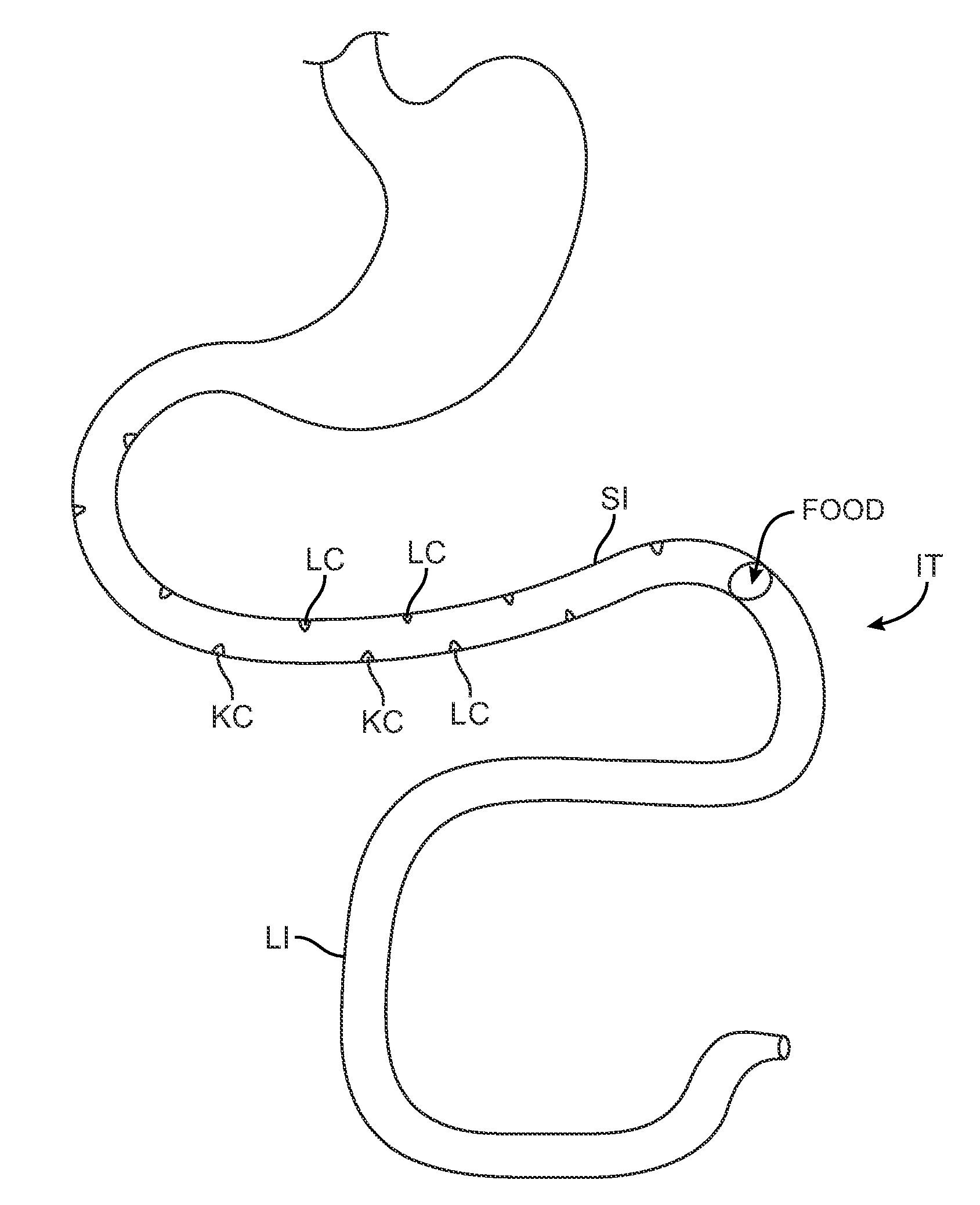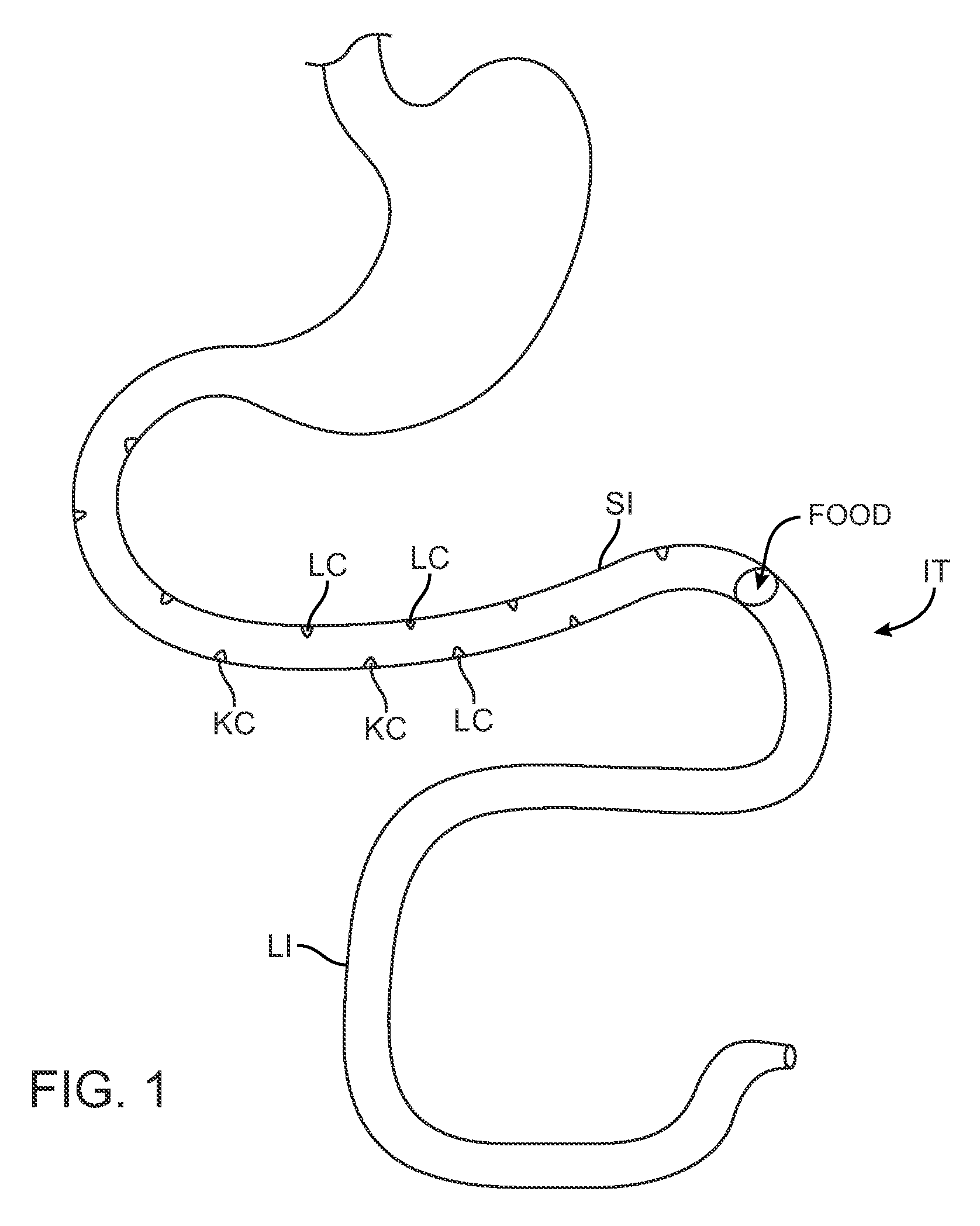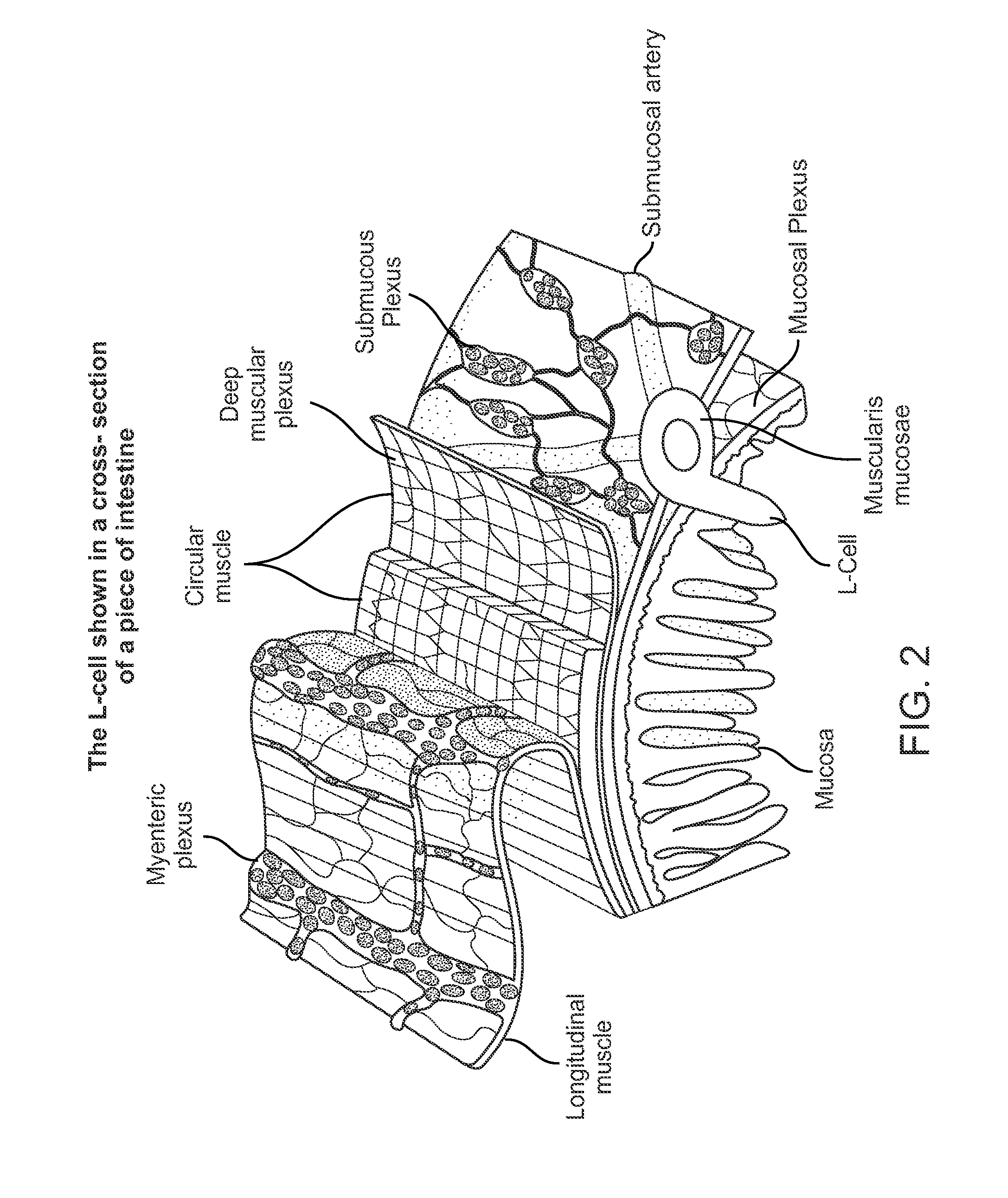Swallowable capsule and method for stimulating incretin production within the intestinal tract
a technology of incretin and capsules, which is applied in the field of electric stimulation cells, can solve the problems of many approaches, sugar accumulation in blood, and body failure to use insulin properly, and achieve the effects of stimulating l-cell secretion, facilitating insulin release, and enhancing the activity of the body
- Summary
- Abstract
- Description
- Claims
- Application Information
AI Technical Summary
Benefits of technology
Problems solved by technology
Method used
Image
Examples
example 1
Electrical Stimulation of In Vitro GLP-1 Release
[0051]Culture dishes were coated on ice with Matrigel by adding 50 ul / cm2 (190 ul in 24 well dishes). The dishes were warmed at 37° C. for 30 minutes, and then seeded with 260,000 cells using high glucose DMEM supplemented with 2 mM glutamine (0.146 g per 500 ml), 10% fetal bovine serum (FBS), and 1% Pen Strep. After 48 hours there were 1.5-2 million cells per well. The initial cells were NCI-H716 cells, which are a human poorly differentiated colorectal adenocarcinoma. These cells grew undifferentiated in suspension. However, after the 48 hour treatment described above, the cells differentiated into GLP-1 secreting cells. These GLP-1-secreting cells were used for the following experiment.
[0052]For the experiment, the cell medium was replaced with HBSS supplemented with 0.5% FBS and optionally one of the following test agents:[0053]1. PMA (phorbol-12-myristate-13-acetate) (stock solution of 1 mg in 1.6 ml DMSO=1 mM; add 1 ul per ml of ...
PUM
| Property | Measurement | Unit |
|---|---|---|
| frequency | aaaaa | aaaaa |
| depth | aaaaa | aaaaa |
| depth | aaaaa | aaaaa |
Abstract
Description
Claims
Application Information
 Login to View More
Login to View More - R&D
- Intellectual Property
- Life Sciences
- Materials
- Tech Scout
- Unparalleled Data Quality
- Higher Quality Content
- 60% Fewer Hallucinations
Browse by: Latest US Patents, China's latest patents, Technical Efficacy Thesaurus, Application Domain, Technology Topic, Popular Technical Reports.
© 2025 PatSnap. All rights reserved.Legal|Privacy policy|Modern Slavery Act Transparency Statement|Sitemap|About US| Contact US: help@patsnap.com



